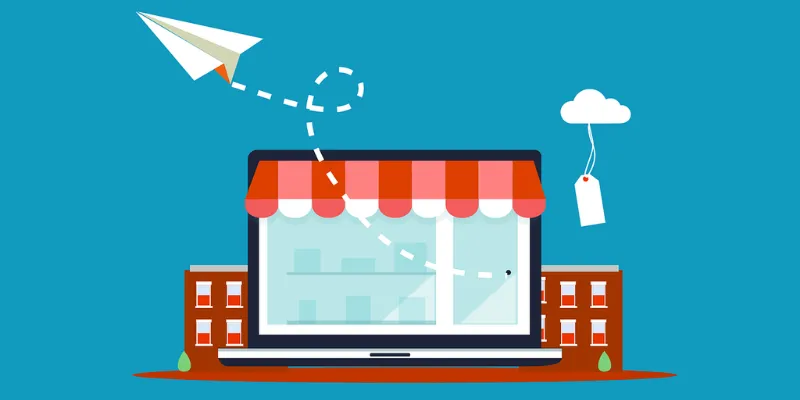Flash sales and decoding the psychology of impulse buying
Flash sales tap into human psychology to drive instant decisions, making them a highly effective strategy for ecommerce businesses. Automated workflows and technologies can help maximise their benefits and minimise risks.
Flash sales have become a powerful tool for driving and boosting sales. With countdown clocks ticking down and the promise of steep discounts, shoppers often make snap decisions—adding products to their carts and completing purchases without giving it a second thought.
These sales events, designed to trigger urgency, have proven incredibly effective in attracting large volumes of customers, increasing brand visibility, and driving short-term revenue surges.
However, the rush of a flash sale can also lead to unintended consequences. Buyers often make mistakes in the rush, leading to a spike in returns and cancellations. This is where trusted delivery aggregator platforms come into play, helping sellers navigate the chaotic yet rewarding world of flash sales with tools that reduce errors and improve customer satisfaction.
The psychology of flash sales
Flash sales and limited-time offer leverage four key psychological phenomena: the scarcity effect, anchoring effect, loss aversion, and emotional appeal. Let's break these down further.
Scarcity effect
Customers assign more value to an item if they perceive it to be scarce, whether it’s an item at a discounted rate for a limited duration or an item in limited stock. The ticking clock or the "only a few hours left" reminder motivates buyers to act swiftly, fearing they might miss out on a deal. The feeling of urgency triggered by a countdown or limited stock can spur impulsive purchasing decisions.
Anchoring effect
Consumers anchor their perceptions based on the first piece of information they receive. Flash sales exploit this by presenting a high initial price as a reference point and showcasing a significantly lower sale price. For instance, a product originally priced at Rs 100 might be offered for Rs 39 during the sale. This comparison makes the discount appear irresistible, and buyers are more likely to make quick decisions based on perceived value.
Loss aversion
Humans are wired to fear loss more than they value gain. Flash sales exploit this by selling items for a limited time, pushing consumers into a "buy now, think later" mentality. The fear of missing out on a bargain triggers impulse buying, leading to increased sales quickly.
Emotional appeal
Flash sales often use emotional messaging to market items as ideal gifts or as solutions to personal needs. Whether it’s promoting a product as the perfect gift for loved ones or as a way to fulfill one’s own desires, this emotional appeal motivates consumers to act quickly. By appealing to both positive and negative emotions, businesses tap into customers’ aspirations, making them more likely to make impulsive purchases.
These psychological triggers significantly amplify the effectiveness of flash sales. Additionally, flash sales offer businesses an opportunity to attract new customers and increase website traffic while also helping brands test customer preferences and refine their offerings.

The downside: RTOs and customer dissatisfaction
Despite their success, flash sales often lead to unintended consequences. One of the most significant challenges is the spike in return-to-origin (RTO) requests, which is common after impulse purchases. These impulsive buying decisions, made under pressure, can result in incorrect purchases due to inadequate product understanding, multiple orders of the same product, orders placed with incorrect addresses during rushed checkouts, and post-purchase regret, which leads to cancellations or returns.
How shipping tech platforms help reduce RTOs
As businesses capitalise on the growth potential of flash sales, managing RTO rates becomes essential. Shipping tech platforms play a crucial role in reducing RTOs by offering tools like automated order confirmation, address verification, and real-time updates.
These platforms send automated messages for order confirmation and address verification, allowing sellers to confirm or cancel orders quickly. Automated and manual follow-up calls ensure the information is accurate if necessary. Address verification features enable customers to update or correct addresses. These tools help prevent RTOs and mitigate losses associated with surge-driven purchases.
Leveraging analytics to optimise flash sales
Leveraging analytics is key to optimising flash sales and reducing RTOs. Shipping-tech platforms can provide valuable data on common RTO triggers, helping sellers adjust their strategies. Insights might include peak hours for flash sale success, products prone to higher return rates, and regions with delivery challenges. With this data, sellers can refine their offers, target the right audience, and improve customer satisfaction, leading to sustained growth.
Striking the right balance
As ecommerce evolves, flash sales are becoming more personalised and data-driven. Technologies like AI and machine learning can predict consumer behaviour, enabling sellers to tailor offers and minimise RTOs. Integrating sustainable practices, such as eco-friendly packaging and optimised logistics, can further enhance customer loyalty and brand image.
Flash sales are undeniably effective, but they must be executed with care to maximise their potential and minimise risks. Clear communication is essential, as transparent product descriptions and pricing help avoid misleading buyers.
Generating excitement before the sale through email teasers, social media campaigns, and exclusive previews can significantly boost engagement. Additionally, providing accessible customer support post-sale is crucial for handling order tracking and inquiries. Brands that partner with shipping-tech platforms can leverage their expertise to prevent issues like RTO problems and other mishaps, ensuring a smoother flash sale experience.
The bottom line
Psychological insight and technological innovation are key to crafting successful flash sales that resonate with consumers and drive sustainable growth. Flash sales tap into human psychology to drive instant decisions, making them a highly effective strategy for ecommerce businesses.
However, managing the challenges, particularly RTOs, is essential to sustain profitability and customer trust. By implementing automated workflows for order confirmation and address verification, sellers can maximise the benefits of flash sales while minimising risks.
(Ravi Goel is the Chief Business Officer at RapidShyp.)
Edited by Jyoti Narayan







